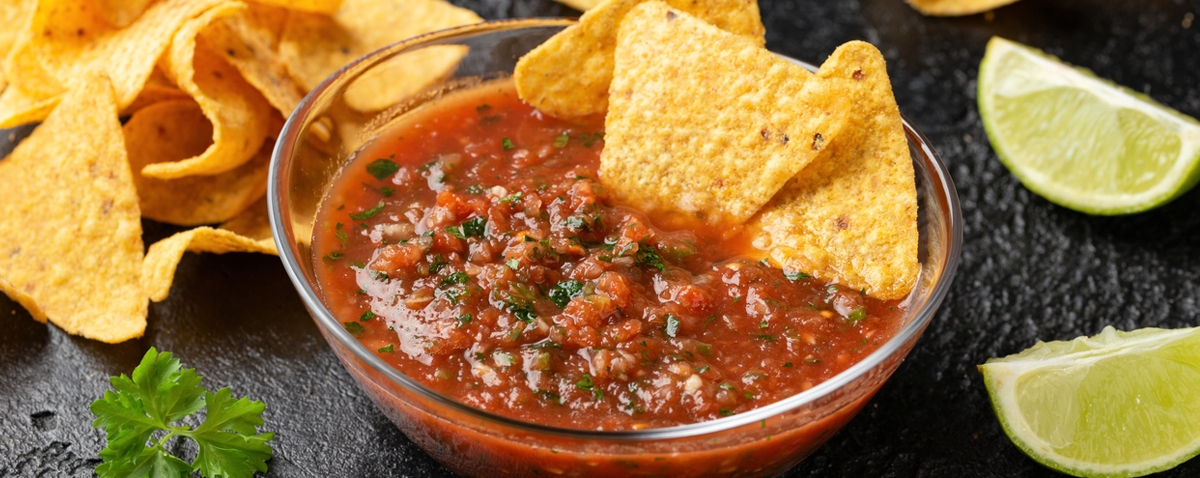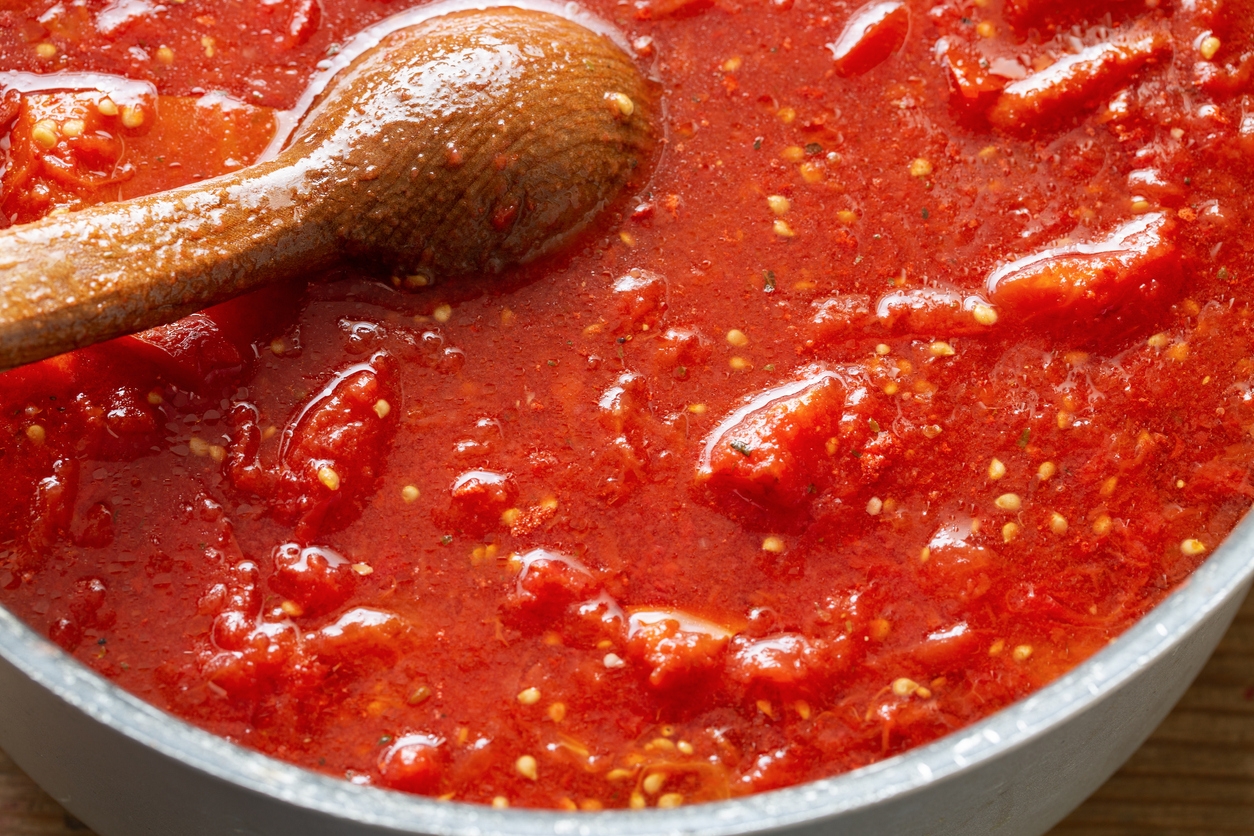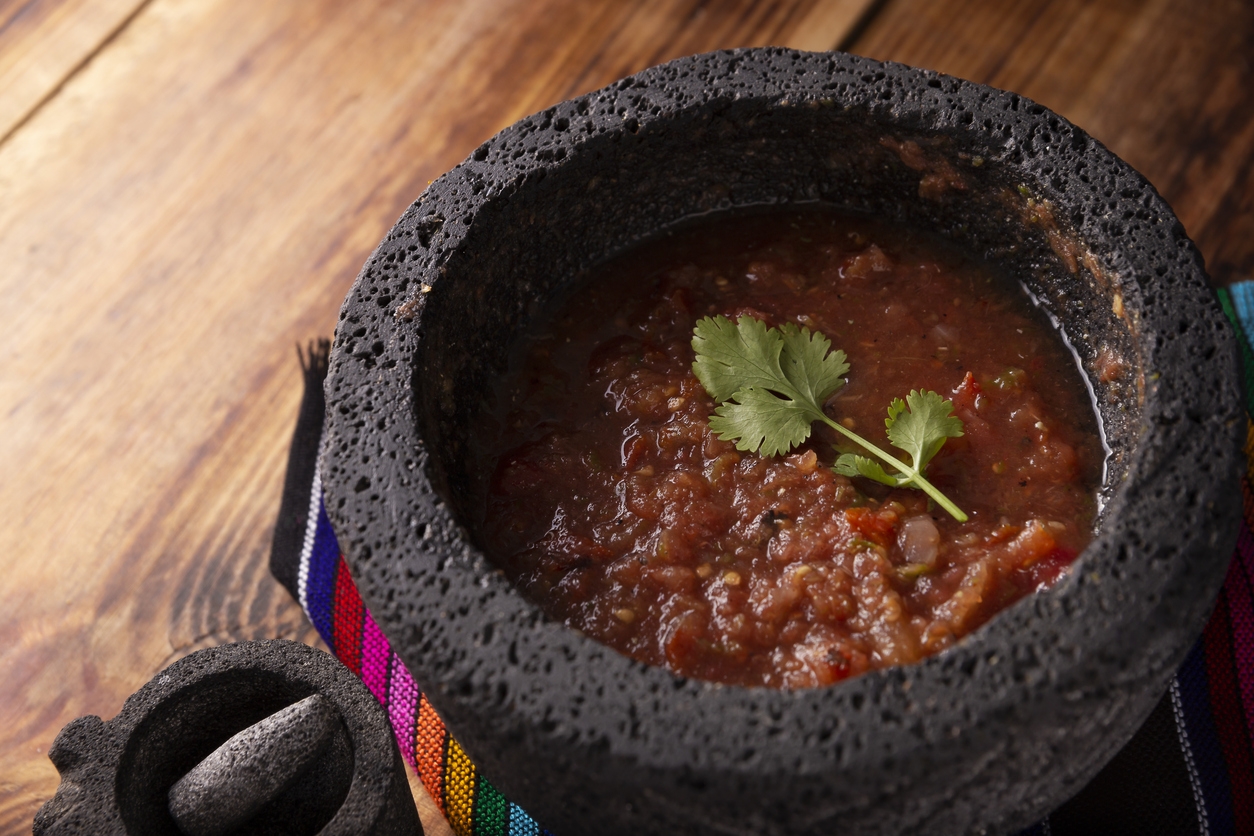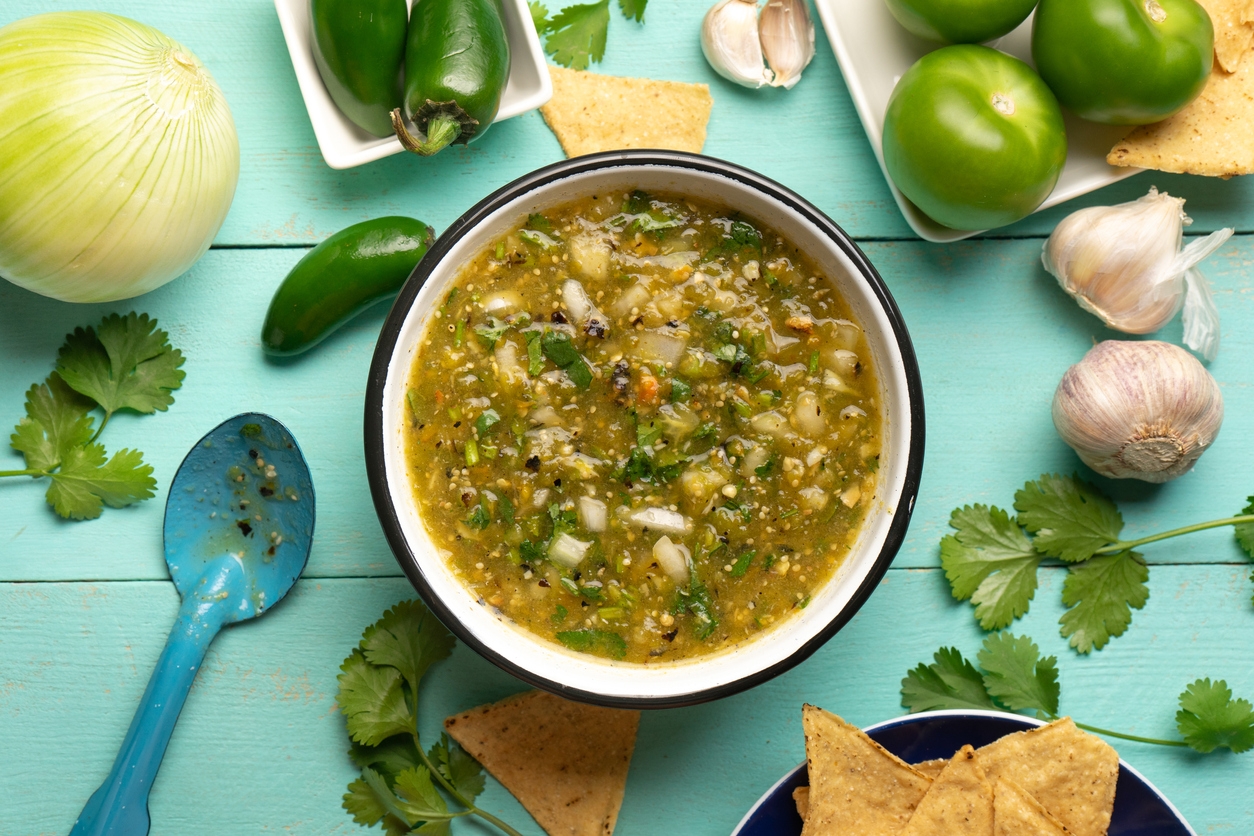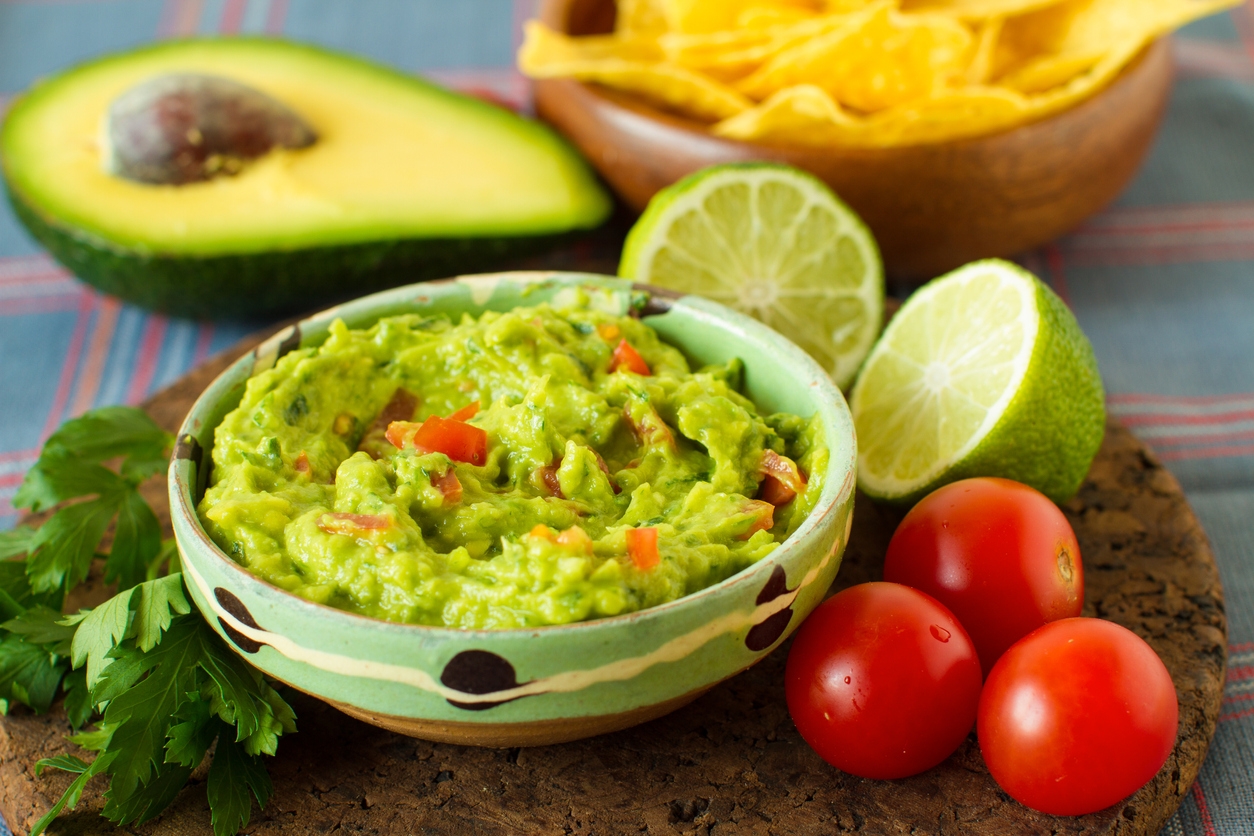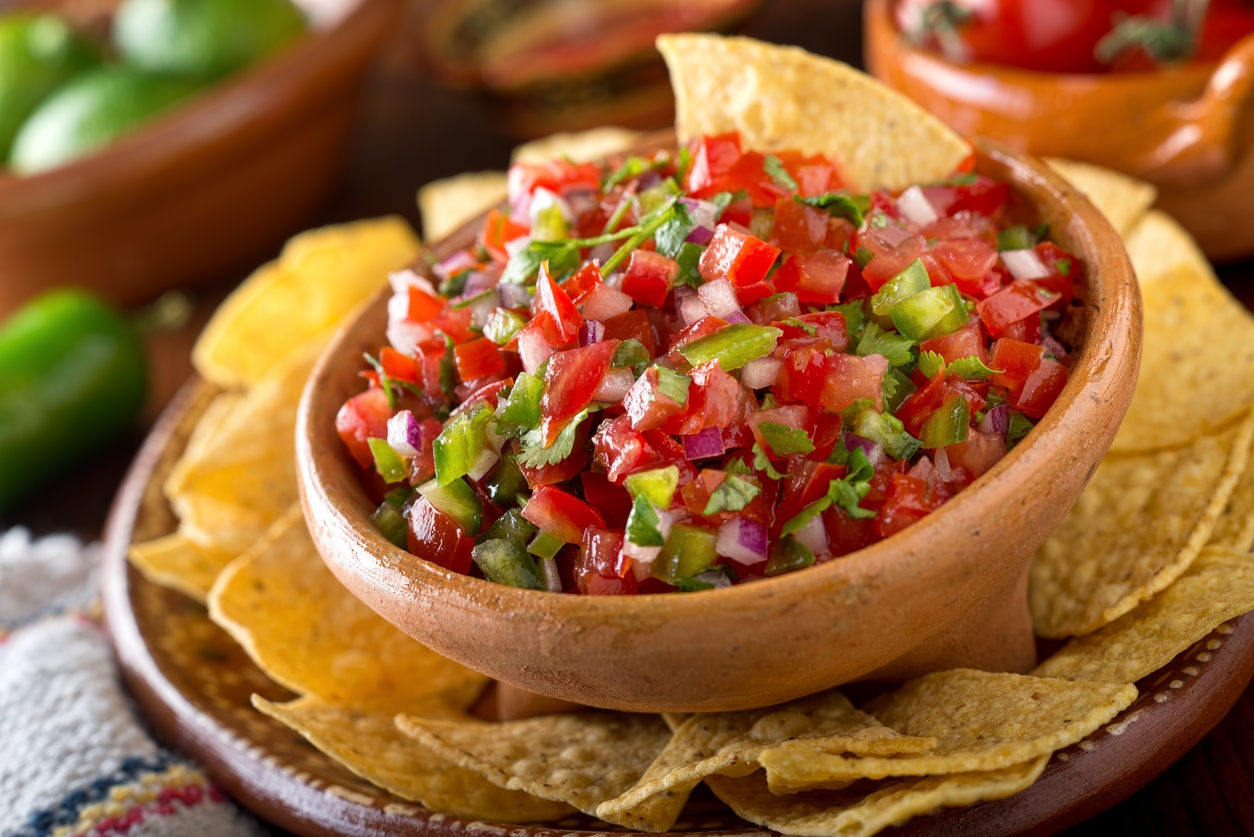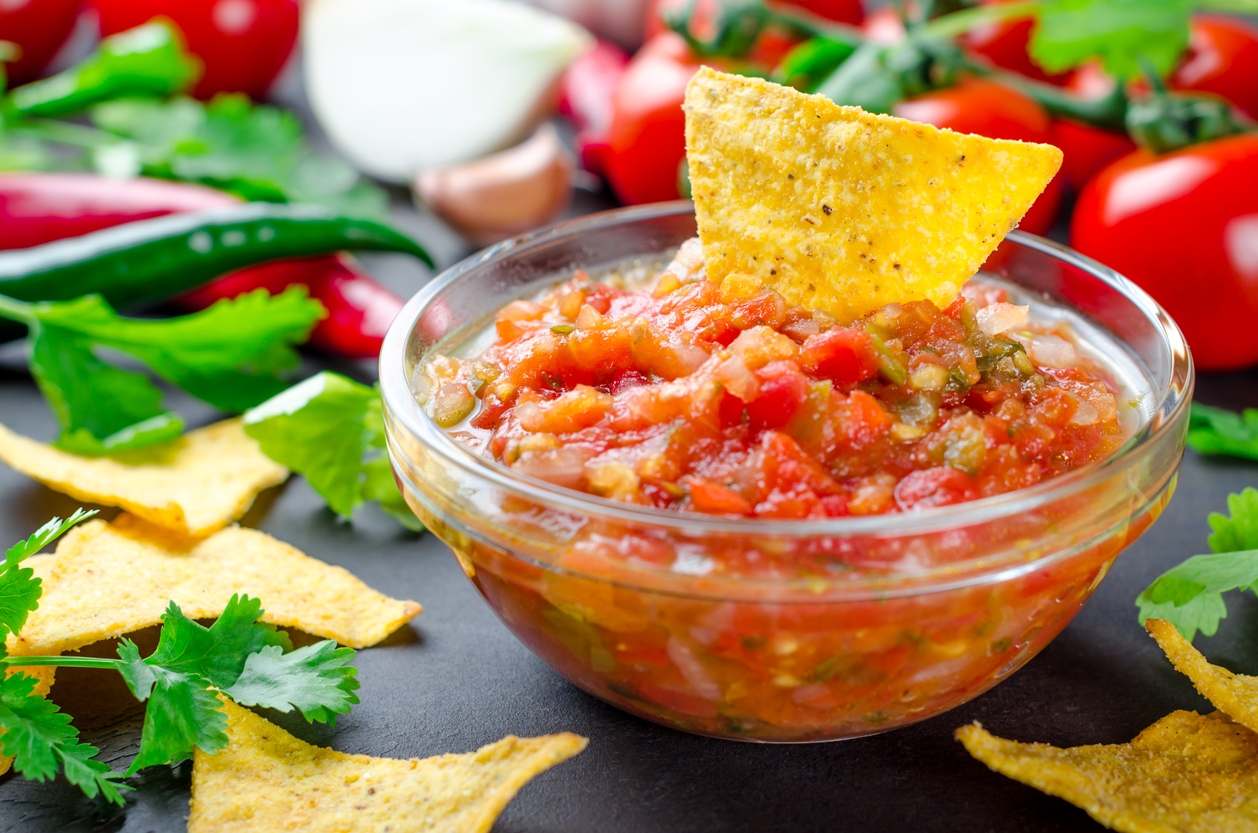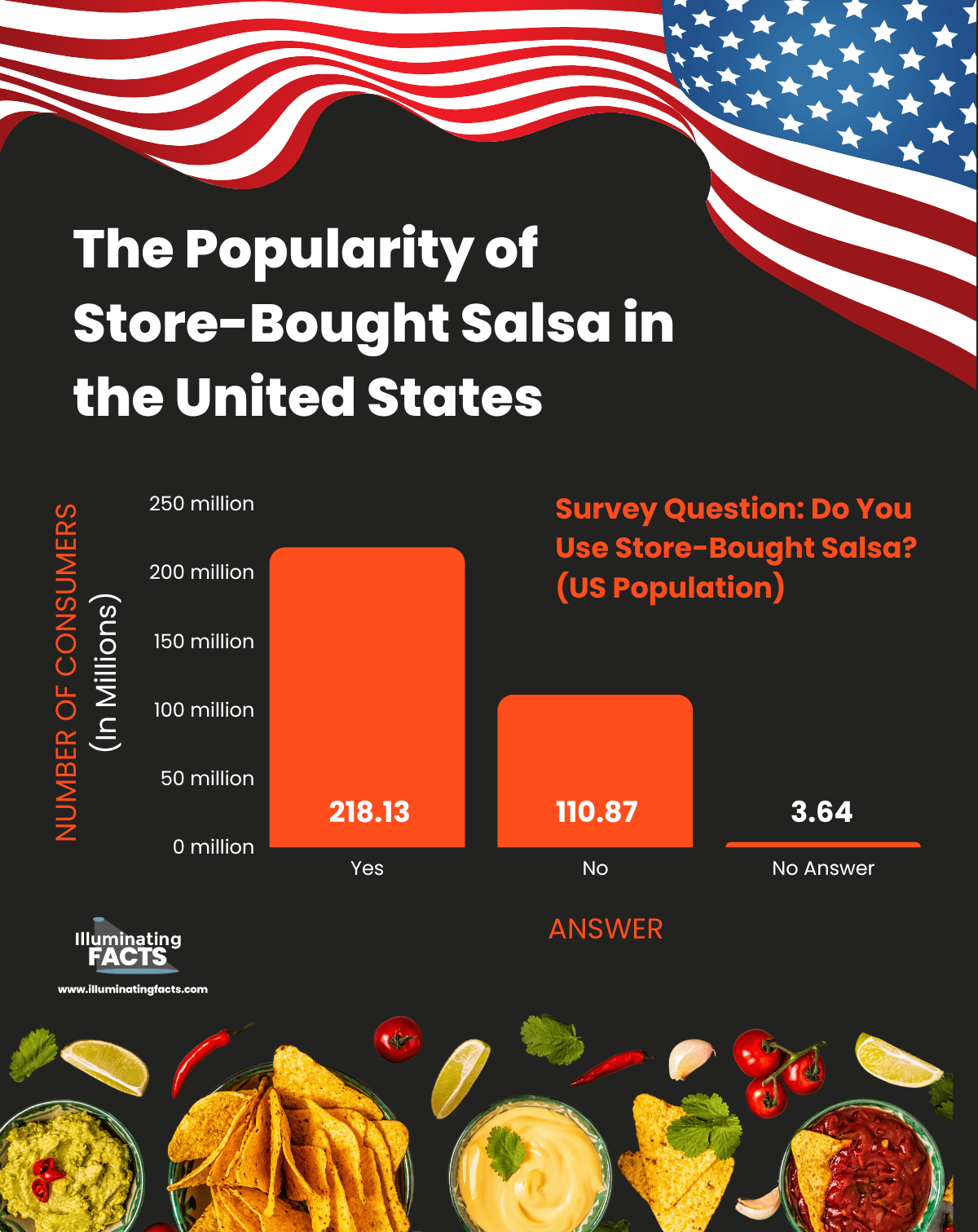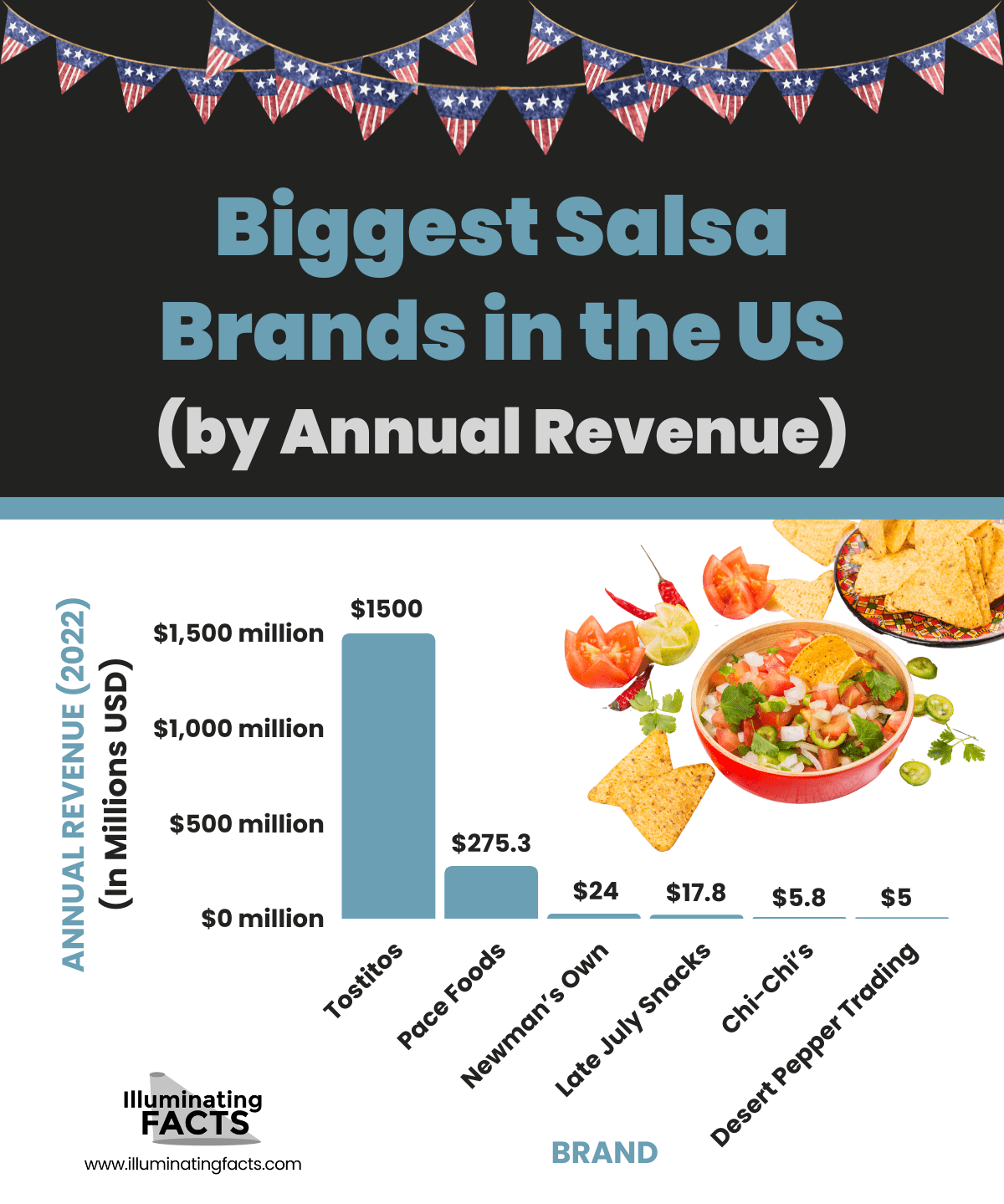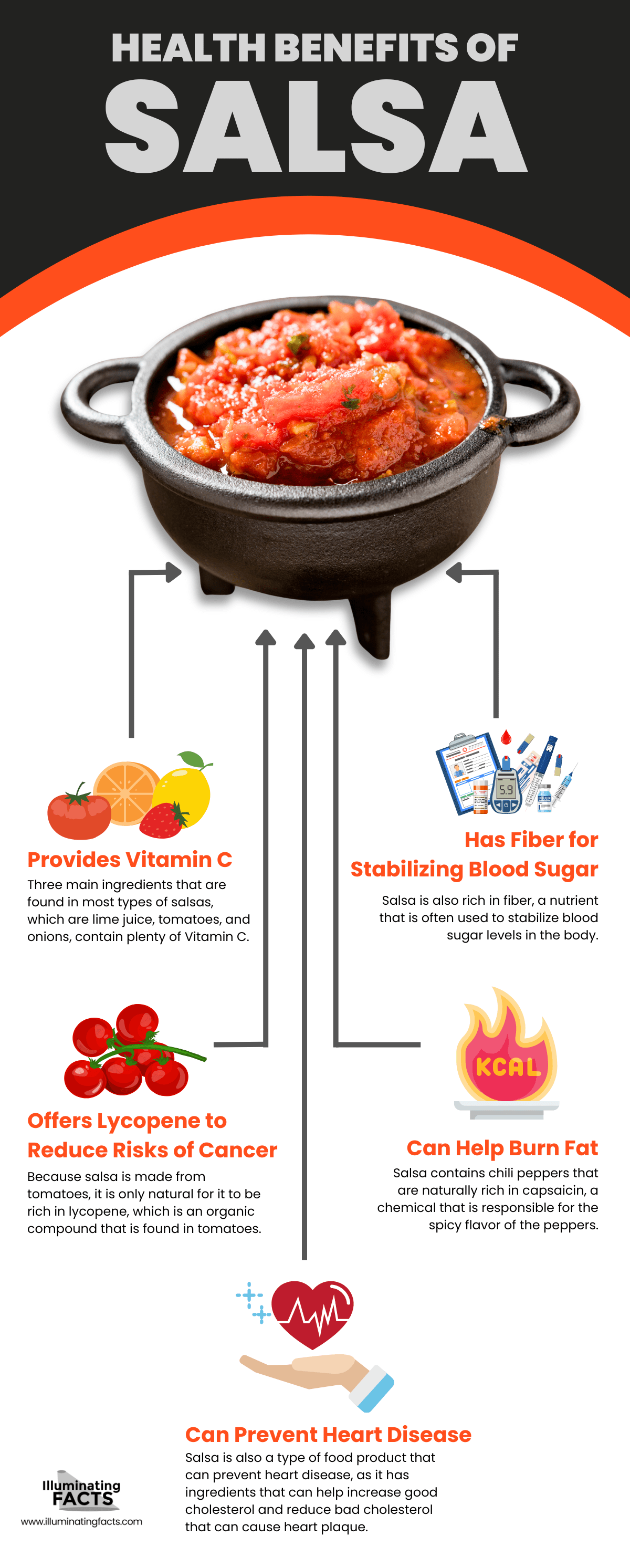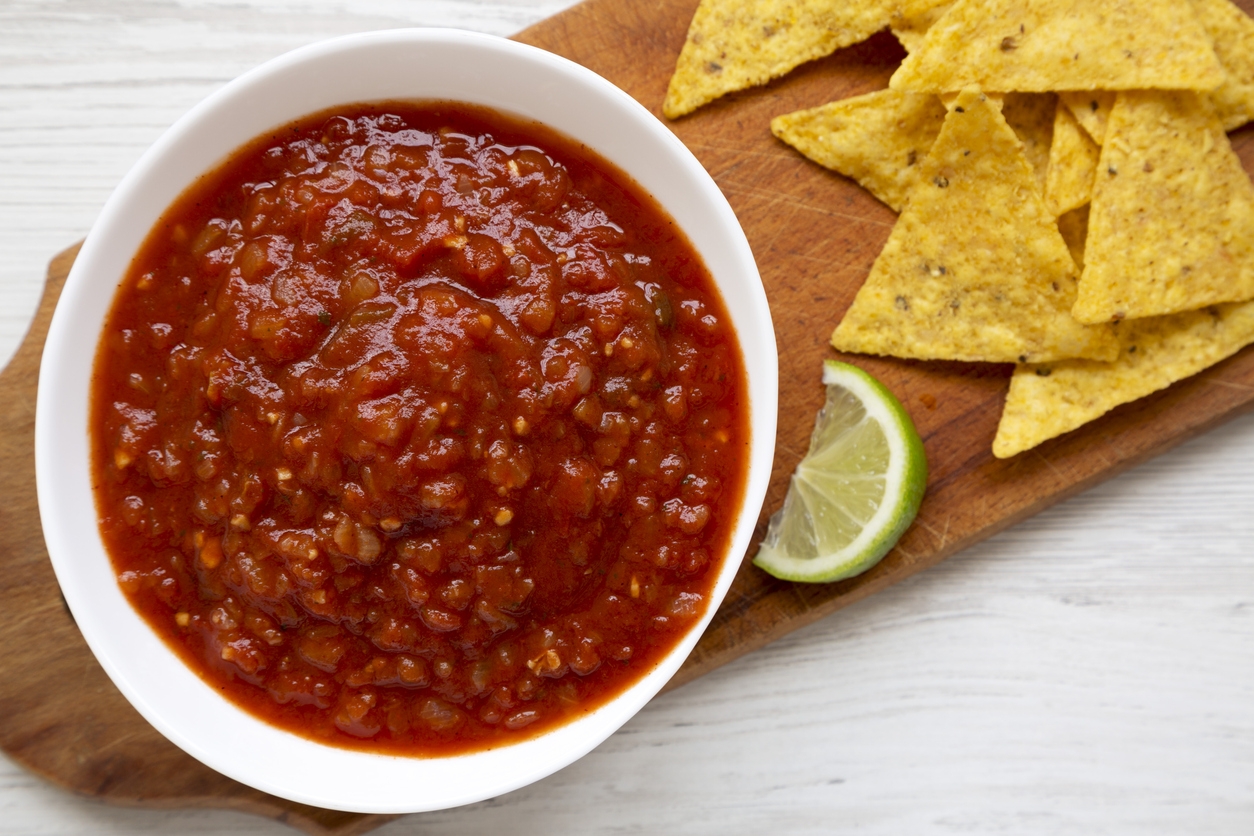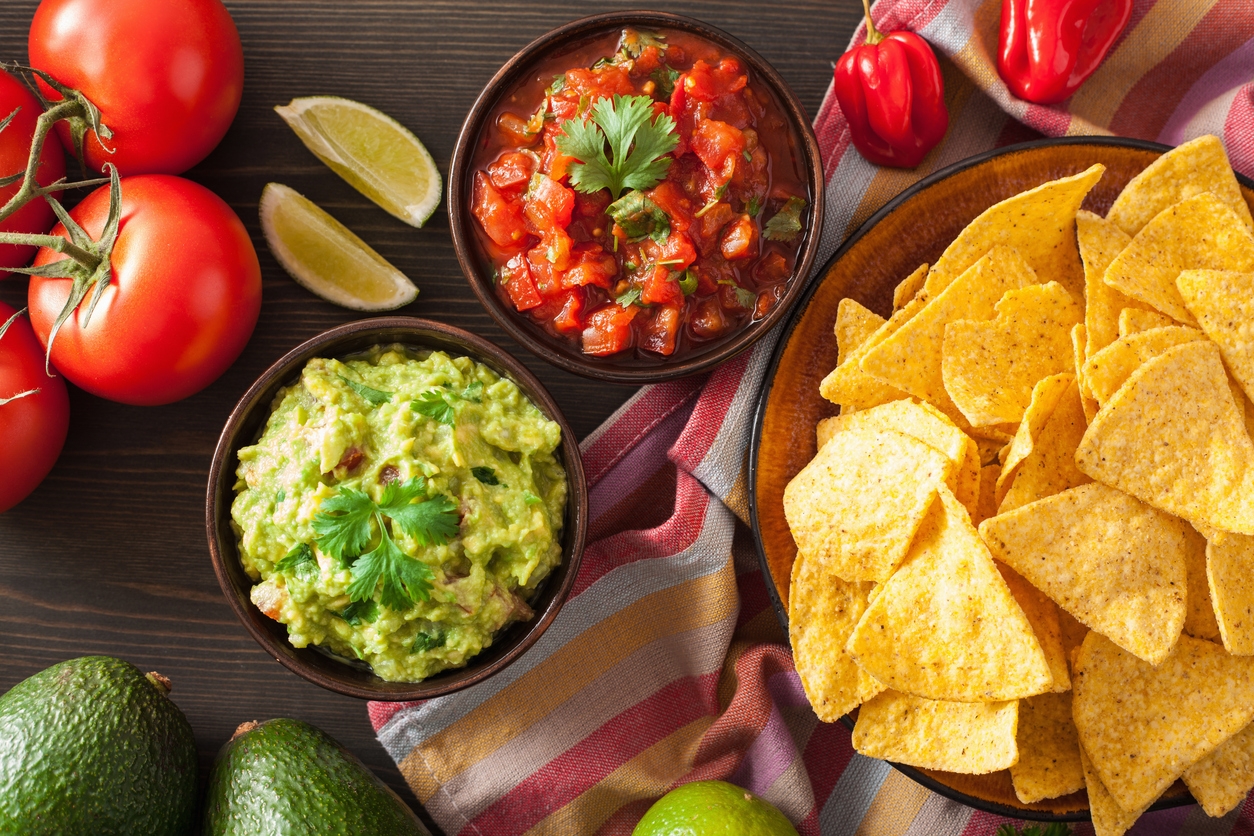When it comes to dips or condiments, there are only a few that is as good as salsa, which is known by many people as a sauce that is made by mixing tomatoes, chili peppers, and other ingredients to create a red and chunky mixture that is perfect as a dip for tortilla chips and as a condiment for tacos.
However, what many of us don’t know is that there are also other varieties of salsa that are not red in color and are not chunky in consistency. These varieties of salsa have come from different places, and for us to know more, we should talk about where salsa originated and how it came to be. Here are the origins of salsa and the details about its varieties.
The Origins of Salsa
Salsa is a sauce that wouldn’t have been invented if tomatoes and tomatillos (a green-colored tomato that is a different species from the usual red tomato) weren’t domesticated between 3000 to 800 BC. [1] Another primary ingredient for salsa, chili peppers, is speculated to have been domesticated around 5300 BC. Although tomatoes are native to Mexico and other areas in Central and South America, their domestication and cultivation allowed them to be much more edible and usable for different kinds of dishes.
It is believed that the Ancient Aztecs that occupied the lands of Mexico were the ones responsible for creating the salsa. The Aztecs’ fondness for salsa was chronicled in the “Florentine Codex,” a book that was written by a Franciscan missionary named Bernardino de Sahagun, who visited the lands of Mexico in 1592 to observe the Aztecs and spread Catholicism. In the Florentine Codex, there are essays that have described salsa as a condiment or sauce that has never really changed in terms of ingredients or preparation for hundreds of years. [2]
While we know the red sauce for tortilla chips and tacos as “salsa” today, the name of the condiment or dip wasn’t coined until 1574, when Alonso de Molina, a Franciscan priest and grammarian, tasted it for the first time. Interestingly, the Spanish word “salsa” is translated as “sauce” in English.
The Different Types of Salsas
Besides the red salsa that is popular in the United States and other countries today, there are other types of salsas that are as delicious as the popular variant. Here are the details for the different types of salsas you should know about.
Salsa Roja
Salsa roja, which translates to “red sauce” in English, is arguably the most popular type of salsa in the world. Because of its popularity, salsa roja is often called simply “salsa” in the United States. Salsa roja usually contains tomatoes, serrano or jalapeno peppers, onions, garlic, cilantro, and lime sauce. Some of these ingredients can be cooked before being mixed with the others, while some can be added raw or uncooked. Besides being popular, salsa roja is also quite versatile, as it can be used as a condiment for tacos and burritos and as a dipping sauce for tortilla chips and nachos. [3]
Salsa Verde
Salsa verde, meaning “green sauce” in English, is the type of salsa that uses tomatillos (also known as Mexican husk tomatoes) as a primary ingredient instead of tomatoes. Tomatillos are green-colored tomatoes that are smaller in size compared to red tomatoes while also being less sweet and more sour. A common misconception about tomatillos is that they are just a different version of the regular red tomatoes, but the truth is that they are actually a different species that is denser and has less water content in its interior.
The ingredients used for salsa verde include tomatillos, onions, jalapeno or serrano peppers, cilantro, and garlic. Because of the sour or acidic qualities of salsa verde, it doesn’t need lime juice anymore in order for it to have balanced acidity, unlike salsa roja, which lacks sourness without lime juice. Salsa verde is primarily used as a dip for tortilla chips, but it can also be a condiment for a variety of dishes if you want a less sweet and more sour flavor for your salsa.
Salsa Taquera
Salsa taquera, also known as “taco sauce,” is a variant of salsa that is specifically used as a topping for tacos. The unique ingredient used in salsa taquera is the chile de arbol (bird’s beak chile or rat’s tail chile), a Mexican chili pepper that is spicier compared to serrano and jalapeno peppers, which are the two common types of peppers used for most salsa variants. [3]
Salsa taquera is runnier and has fewer chunks compared to most types of salsas, so it may not be the best salsa for dipping. However, as said before, this kind of salsa is used primarily as a sauce for tacos to give them a kick of spiciness and a little bit of sourness. Other ingredients used for salsa taquera include tomatoes, salt, garlic, onions, and lime juice.
Salsa Criolla
Salsa criolla is a type of salsa that originated in Peru and has a different appearance compared to other variants of salsa. What’s different about salsa criolla is that it doesn’t have tomatoes, which makes it a very unconventional salsa.
Instead of tomatoes, salsa criolla has red onions that are thinly sliced and mixed with aji Amarillo peppers, cilantro, salt, and lime juice. Red onions are known to have a sweeter flavor compared to yellow or white onions, and they can also be served raw or cooked. For salsa criolla, sliced raw red onions are used for better sweetness and acidity. In addition, salsa criolla isn’t saucy since there aren’t any crushed or pureed tomatoes on it.
Salsa de Aguacate
This type of salsa is light green in color due to the avocadoes that serve as one of its primary ingredients. Besides being green, salsa de aguacate is also pureed instead of chopped, so it is significantly runnier and less chunky compared to salsa rojo and other common types of salsa. Salsa de aguacate is described to be slightly sweeter than salsa rojo, although it still has the sour and spicy flavors that you will find in most salsa variants. This type of salsa contains avocadoes, tomatillos, serrano peppers, cilantro, garlic, and onions.
Pico de Gallo
Pico de gallo is a chunky salsa that doesn’t have a saucy texture or consistency, much like salsa criolla. But, pico de gallo does actually contain tomatoes, although these tomatoes are chopped into big pieces instead of being crushed or pureed. Because it isn’t runny or watery, pico de gallo is primarily served as a topping or filling for various dishes, including tacos, burritos, and tortillas.
Another thing that is interesting about pico de gallo is that it still has the same ingredients as salsa rojo, which are tomatoes, onions, serrano peppers, cilantro, lime juice, and salt, but the ingredients for pico de gallo aren’t blended, and are just simply chopped and mixed together.
Popularization of Salsa in the United States
Salsa is not only popular in Central and South America but also in the United States, where tortilla chips, nachos, and other similar kinds of snacks are considered a favorite by many Americans. The cravings of a lot of Americans when it comes to spicy sauces began with the commercialization of hot sauces during the 19th century, which is when chili peppers became more accessible in different countries around the world. It was also in the same period when salsa was introduced in the United States.
But salsa wouldn’t be commercialized in the United States until the 20th century. It was in the said period when La Victoria, an American company that has produced Mexican food products since 1917, sold the first jarred salsas in the United States. When the company was sold in 1941 to a German immigrant named Henry Tanklage, the popularity of jarred salsas soared in the country. Because of how popular jarred salsas were during that time, the company took advantage of it by introducing more flavors in 1946, and these new flavors include red salsa jalapeno and green chili salsa. [1]
Even though salsa has been around in the US since the 19th century, it was only in the 1980s that salsa became a craze because of the popularity of tortilla chips and snacks that can be dipped in salsa. By the 90s, it was reported that about 36 percent of households in the US purchased salsas regularly. [2]
In recent years, 80% of households now have salsa in their pantry or kitchen, which is proof of the growing popularity of salsa in the US throughout the 2000s and beyond. So, it wouldn’t be surprising if more and more people consider salsa as their favorite sauce for dipping chips.
The Popularity of Store-Bought Salsa in the United States
The sales of salsa in the United States increased dramatically in the 90s due to the many salsa brands and products that came out during that period. Before the massive commercialization of salsa, many people in North and South America would usually make salsa on their own.
However, homemade salsa isn’t really a convenient sauce to make, as there are many ingredients that you would need to chop, mash, and puree so that you can create a great salsa. But, by buying store-bought salsa, people can already have salsa ready without the need to spend hours preparing it. Take a look below for a graph that shows how popular store-bought salsa is compared to homemade salsa. The graph is created through a survey wherein people in the US were asked if they buy store-bought salsa instead of making them at home. [6]
| Survey Question: Do You Use Store-Bought Salsa? (US Population) | |
| Answer | Number of Consumers (in Millions) |
| Yes | 218.13 |
| No | 110.87 |
| No Answer | 3.64 |
Biggest Salsa Brands in the US
While homemade salsas are still being made in some households in the US, there is no denying that store-bought salsa brands have taken over the market because of how convenient they are to just buy and pour on a bowl. There are already dozens of different salsa brands that are available in the US, but only a few are considered to be the best. Here is a table that shows the biggest salsa brands in the US.
| Biggest Salsa Brands in the US (by Annual Revenue) | |
| Brand | Annual Revenue (2022) |
| Tostitos | US$1.5 billion |
| Pace Foods | US$275.3 million |
| Newman’s Own | US$24 million |
| Late July Snacks | US$17.8 million |
| Chi-Chi’s | US$5.8 million |
| Desert Pepper Trading | US$5 million |
Based on the graphic above, you can already see that Tostitos is a much bigger brand than the other, and it is even above Pace Foods, the brand that launched the first commercially successful jarred salsa in the United States. On the other hand, the success of Tostitos as the leading salsa and tortilla chip brand is not surprising since the brand is owned by PepsiCo, Inc., one of the biggest food companies in the world. In addition to being owned by a very large company, Tostitos also offer plenty of variety when it comes to salsa, and some of the salsa flavors you can get from the brand include Chunky Salsa, Salsa Con Queso, Restaurant Style Salsa, and Avocado Salsa.
Health Benefits of Salsa
Besides being delicious and fun to eat, salsa is also a very healthy sauce that contains plenty of nutrients. Here are some of the benefits of salsa for your health.
Provides Vitamin C
Three main ingredients that are found in most types of salsas, which are lime juice, tomatoes, and onions, contain plenty of Vitamin C. When it comes to benefits, Vitamin C has plenty, including keeping cells in the body healthy, improving the healing capabilities of the body, and maintaining healthy skin. So, with just Vitamin C alone, you can already see how beneficial it is for you to consume salsa. Fortunately, there are still other nutrients that you can get from salsa.
Has Fiber for Stabilizing Blood Sugar
Salsa is also rich in fiber, a nutrient that is often used to stabilize blood sugar levels in the body. [7] If you have diabetes, then eating natural salsa that doesn’t have preservatives is good for you since it is through salsa that you will get a lot of fiber that can maintain the healthiness of your blood. Besides stabilizing blood sugar, fiber can also help improve digestion.
Offers Lycopene to Reduce Risks of Cancer
Because salsa is made from tomatoes, it is only natural for it to be rich in lycopene, which is an organic compound that is found in tomatoes. Lycopene can help in reducing the risk of cancer, as it is a powerful antioxidant that can fight free radicals. These free radicals are harmful elements that can cause severe diseases like cancer. So, by consuming food that has lycopene and other antioxidants, you will have a much better chance of staying healthy and avoiding serious illnesses.
Can Help Burn Fat
Salsa contains chili peppers that are naturally rich in capsaicin, a chemical that is responsible for the spicy flavor of the peppers. Not only does capsaicin make chili peppers taste good, but it also helps in improving your body’s ability to burn fat. [7] So, salsa can be a good sauce to consume if you want to lose weight. Of course, in order to really lose fats in your body, you would have to get some exercise, but eating salsa can make the process easier and faster.
Can Prevent Heart Disease
Salsa is also a type of food product that can prevent heart disease, as it has ingredients that can help increase good cholesterol and reduce bad cholesterol that can cause heart plaque. In case you don’t know, heart plaque is a buildup of bad cholesterol in the inner lining of the artery.
When the plaque gets big, it blocks the pathway for red blood cells, and when the red blood cells are clogged, it can result in heart attack, coronary artery disease, or heart failure. By eating salsa and other food products that are rich in good cholesterol or are cholesterol-free, you will be able to prevent diseases that may affect your heart.
Interesting Facts about Salsa
- In 1991, the yearly sales of salsa in the United States overtook the yearly sales of ketchup, which is another popular condiment in the country.
- Tortilla chips and salsa were declared the official state snack of Texas in 2003. [4]
- Besides La Victoria, another brand that was considered to produce the first successful commercialized salsa is Pace Foods. Pace Foods is the name of the brand founded by World War II veteran David Pace, who moved to San Antonio, Texas, in the 1940s in order to build a manufacturing plant for syrups, jams, and salad dressing. In the late 1940s, Pace Foods launched Pace Picante, their version of jarred salsa that has chunks of green bell peppers and white onions. [5]
- May is considered National Salsa Month.
- The English translation for pico de gallo is “rooster’s beak salsa.”
- The classic Salsa dance is inspired by the spicy but flavorful taste of Salsa. Those flavors are interpreted in various dance moves that are supposed to be powerful but very beautiful and mesmerizing to look at. The Salsa dance style also mixes moves from Hispanic, African, and Caribbean dances.
Conclusion
There is no denying that salsa is one of the best and tastiest sauces today for dipping or as a condiment. While salsa has been around for many centuries, it still remains a very popular sauce not only in North, Central, and South America but also in many countries around the world. Aside from being delicious, salsa is also a very healthy sauce, and one could even argue that it is healthier than most sauces in the market today.
Before we end this article, here are some key points to recap on the origins and popularity of salsa:
- Tomatoes and tomatillos, two primary ingredients for many variants of salsa, are believed to have been domesticated between 3000 and 800 BC.
- The Aztecs were credited to be the inventors of salsa, and it is written in the Florentine Codex by Bernardino de Sahagun that the recipe for the Aztecs’ salsa never really changed since 1592.
- There are different types of salsas to choose from, with some having almost the same ingredients while others would have unique ingredients that make them very different from the others.
- Salsa is very popular in the United States. However, Americans prefer store-bought salsa instead of homemade salsa.
- In addition to being tasty, salsa is also a very nutritious sauce, as it has plenty of benefits for our health.
These are all the things you need to know about the origins of salsa, its varieties, and why it is one of the top-selling sauces in the United States. If you haven’t tried salsa yet, now may be the time to do so. Fortunately, buying salsa is easy nowadays since it is readily available in grocery stores and online shops. Choose the brand and flavor that has great reviews online so that you will have a better first taste of salsa.
References
[1] Sands, C. (2023, January 30). The Ancient Origins Of Salsa. Tasting Table. Retrieved April 4, 2023, from https://www.tastingtable.com/669332/popular-puerto-rican-foods-you-have-to-try-at-least-once/
[2] Surface, J. (n.d.). The History of Salsa in One Bite. Sweet Kickin Salsa. Retrieved April 4, 2023, from https://www.sweetkickinsalsa.com/history-salsa-in-one-bite/
[3] LeRoy, M. (n.d.). Types of Salsa. Webstaurant Store Blog. Retrieved April 4, 2023, from https://www.webstaurantstore.com/blog/3596/salsa-types.html
[4] El Chubby’s. (2020). Salsa fun facts you didn’t know. El Chubby’s. Retrieved April 4, 2023, from https://www.elchubbys.com/salsa-fun-facts-you-didnt-know/
[5] Wells, J. (2016, May 22). 9 Spicy Things You Didn’t Know About Salsa. Mental Floss. Retrieved April 4, 2023, from https://www.mentalfloss.com/article/79751/9-spicy-things-you-didnt-know-about-salsa
[6] Statista Research Department (2022, June 23). Usage of salsa (store bought) in the U.S. 2020. Statista. Retrieved April 5, 2023, from https://www.statista.com/statistics/921225/us-usage-of-salsa-store-bought/
[7] Zanini, L. (2017, October 12). 10 Reasons Your Body Will Thank You for Eating Salsa. Healthline. Retrieved April 5, 2023, from https://www.healthline.com/health/food-nutrition/10-reasons-your-body-will-thank-you-for-eating-salsa

